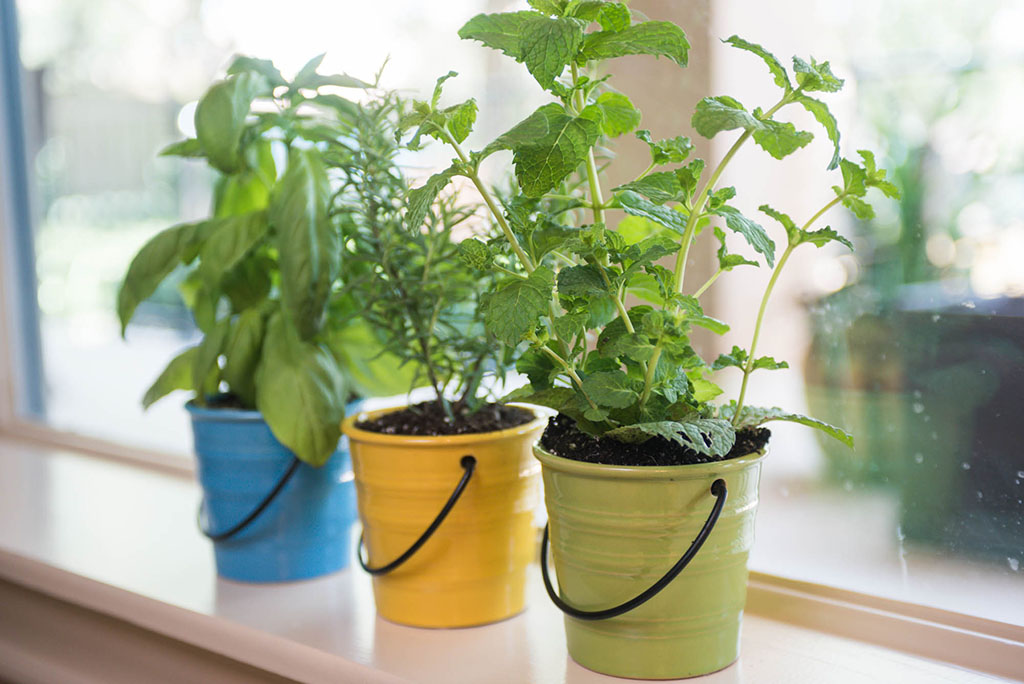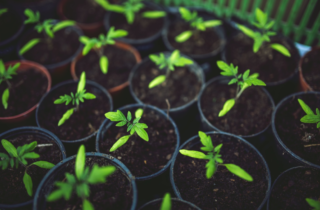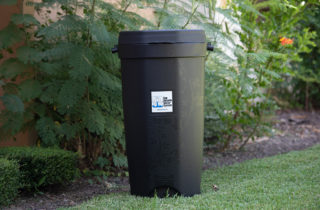You might’ve heard of propagation before, but do you know what it is exactly? It’s…
Growing kitchen herbs is a win-win. You get to fill your yard or windowsill with beautiful, fragrant greenery, while providing options for delicious flavors in your cooking. We all know about the basics—basil, rosemary, mint—but there are many more that do great here in San Antonio. Many of these suggestions are drought tolerant and recommended as part of SAWS’ water-saving landscapes.
Start with the basics
Basil
Nobody can deny the irresistibility of basil. It smells and tastes fantastic, and it’s fairly easy to grow. It does best in full sun and can be used in all types of cuisines—especially Italian food. The only hang-up: basil does require consistent soil moisture in the summer, so keep your basil supply to a minimum.
Rosemary
You may see this in the nursery as “trailing” or “creeping” rosemary. This plant can endure the hot sun with very little watering, making it perfect for San Antonio climate. Another perk? It attracts hummingbirds and pollinators.
Mint
While mint does require frequent watering, it only needs minimal care from there. If you give mint the space, it will grow into a sprawling bush, so keep an eye on it. If you plant it indoors in a pot, be sure to provide good drainage.
Now we’re cooking
Cilantro
Impress your dinner guests with a vibrant Mexican dish prepared with cilantro fresh from your garden. Cilantro does great outdoors between mid-November to mid-March in full sun and has a low water requirement.
Dill
Want an herb that attracts birds, butterflies, andpollinators, doesn’t need a lot of water, and tastes fantastic when added to vegetable dishes? Then dill is your new best friend! Grow it in the winter amid full sun or very light shade—dill is super easy to grow!
Thyme
It’s about time you start growing thyme. As an evergreen herb, thyme does great in full or partial sun without a lot of water. It can be grown in pots or as an informal ground cover in your garden. If you do opt for planting it outdoors, don’t worry about deer, because they don’t like this herb and stay far away from it.
Expert chefs only
Fennel
As a member of the carrot family, fennel adds an anise flavor to salad, sausage, and many other dishes. Both the leaves and seeds are edible, so you have a lot of culinary opportunities with this evergreen herb. Fennel works best in a partly sunny/shady spot, but fortunately doesn’t need much water at all.
Epazote
With a nickname like “Mexican Tea,” you know epazote is the perfect way to spice up your Latin dishes. Most commonly used in beans, epazote is a large, woody-stemmed herb with a strong scent. With only a low water requirement and the ability to thrive in full sun or shade, epazote offers an easy way to vary your flavor profile.
Yarrow
This herb has many uses: cooking, as a tea, treating wounds, attracting butterflies and pollinators, and even providing colorful flowers to your yard. Yarrow blooms in late spring and early summer, can handle anything from shade to full sun, and doesn’t need a lot of water.
The importance of diversification
Cooking with herbs is meant to be fun. Don’t get stuck in a rotation of the same few herbs. Diversify your herb repertoire by growing your own and mixing and matching where you can. The more, the merrier when it comes to growing and cooking with herbs!
SAWS applies the same concept to their water diversification strategy. With eight different water sources—and another currently in the works—SAWS ensures that high-quality, plentiful water is always at the ready. This is accomplished by prioritizing conservation methods and consistently looking for innovative ways to provide plentiful water for today and for generations to come.



